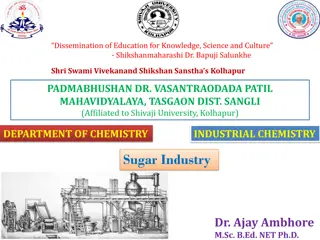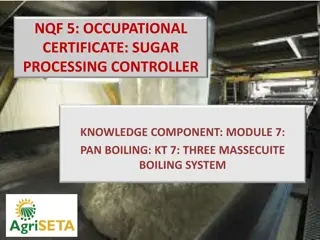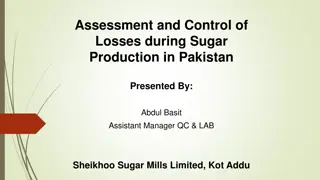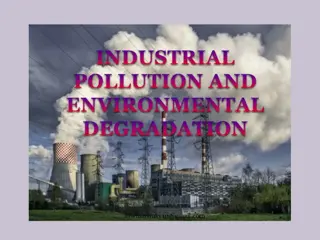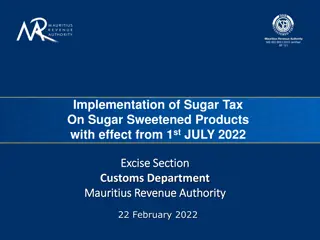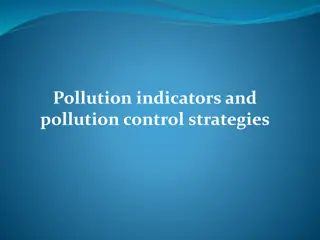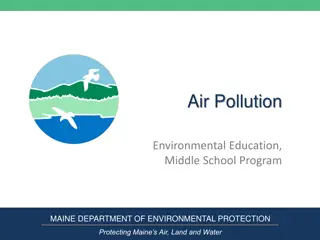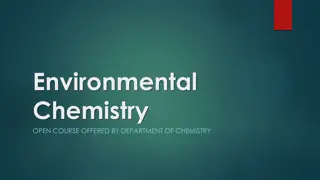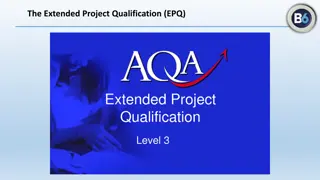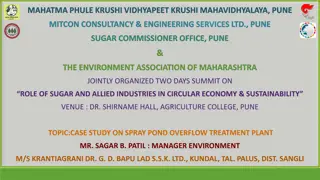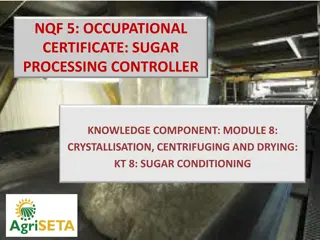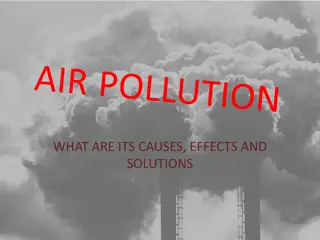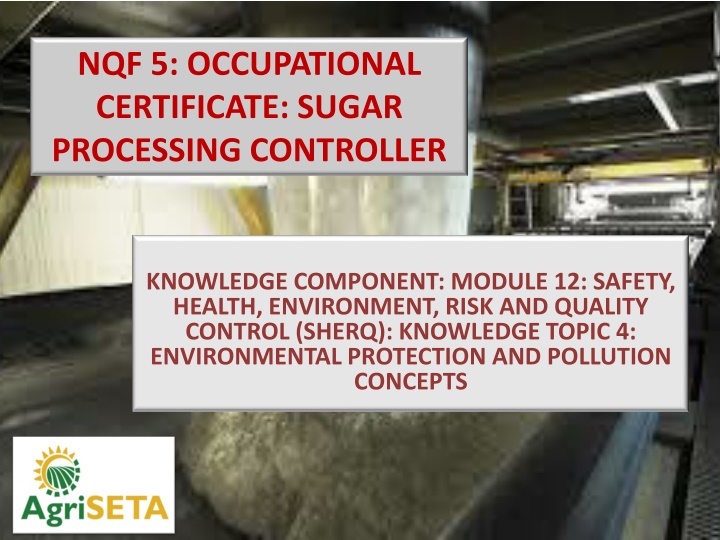
Environmental Pollution and Protection Concepts in Industry
Explore the significance of environmental protection and pollution concepts in industrial settings. Learn about the sources and implications of environmental pollution, as well as the responsibilities of industries in preventing and controlling pollution for a sustainable future.
Download Presentation

Please find below an Image/Link to download the presentation.
The content on the website is provided AS IS for your information and personal use only. It may not be sold, licensed, or shared on other websites without obtaining consent from the author. If you encounter any issues during the download, it is possible that the publisher has removed the file from their server.
You are allowed to download the files provided on this website for personal or commercial use, subject to the condition that they are used lawfully. All files are the property of their respective owners.
The content on the website is provided AS IS for your information and personal use only. It may not be sold, licensed, or shared on other websites without obtaining consent from the author.
E N D
Presentation Transcript
NQF 5: OCCUPATIONAL CERTIFICATE: SUGAR PROCESSING CONTROLLER KNOWLEDGE COMPONENT: MODULE 12: SAFETY, HEALTH, ENVIRONMENT, RISK AND QUALITY CONTROL (SHERQ): KNOWLEDGE TOPIC 4: ENVIRONMENTAL PROTECTION AND POLLUTION CONCEPTS
Environmental Pollution Environmental pollution is any substance, emission, product or by-product of industrialisation which causes or has the potential to cause fouling, contamination or destruction of ground, air or water resources. This pollution may have a temporary or permanent effect. It is caused by emissions which are generated by industrial processes which pass, or are transported beyond the confines of the organisation. Industry has a moral responsibility to accept their role in society, with the emphasis on the short or long term effects of today's manufacturing and marketing policies. They also have a legal responsibility in terms of the OHS Act to prevent any process, substance or emission affecting the community, either on a day-to-day basis, or as the effect of a major hazard incident.
Environmental Pollution (cont.) Common sources of pollution include: Volatile organic compounds. Ozone depleting chemicals (CFC's or Chloroflourocarbons, Carbon Tetrachloride, Methyl Chloroform, Trichloroethanes). Asbestos. Dusts. Lead laden combustion fumes or leachate from dumps. Carbon Monoxide generated from fuel consumption. Acid or alkali dumps into water drainage systems as well as any toxic chemicals or carcinogenic substances which may not, in themselves be toxic, but pose a threat to the ecological balance and systems (e.g. insecticides, pesticides, organic phosphates, etc). Carbon products from various combustion processes, (power stations, boilers, etc.). Benzene, petroleum products leaching through ground soils or into water supplies (often from poorly controlled "run off"). Formaldehydes (especially when they are incinerated). Packaging products which contain PVC's etc. or other materials which are not biodegradable.
Environmental Pollution (cont.) Each employee is advised to assist with pollution control. Report, not only accidents, but anything that you see that you believe could be harmful to the environment. Ensure that you follow all laid down procedures when shutting down equipment. Do not allow dust to accumulate in and around your work area. Ensure that you know exactly what to do in case of an environmental emergency. The Work Instructions that you use have been designed to ensure that the safest and healthiest method of performing a task has been identified - always follow them. Ensure that you read, and understand, the Material Safety Data Sheets for any hazardous substances that are used in your work area.
Environmental Pollution (cont.) Each employee is advised to assist with pollution control (cont.). Never loosen a coupling or a flange on any pipeline unless you have been authorised to do so. Do not store large amounts of hazardous substances in your work area. Pay special attention, and follow, the rules and suggestions contained in any Environmental Awareness training course. Never pour chemicals (cleaning fluids, paraffin oil etc.) down drains. If special waste containers for various items (paper, glass, plastics, metals etc.) are provided, always use them. Never burn plastics in the open air.
Pollution Specific to the Sugar Industry Sugar Mill effluent cannot be discharged directly into a river or stream. Although sugar is non-toxic, it provides a food source for aerobic bacteria which consume the dissolved oxygen in the water faster than it can be replaced. Fish and other aquatic life subsequently suffocate in the deoxygenated water. When there is no more oxygen, anaerobic organisms begin to multiply, producing methane, hydrogen sulphide and ammonia. The water stinks and tastes bitter. Usually insoluble metals become soluble, turning the water black. The sugar concentration in the water may only be in parts per million, but its effect on aquatic life is devastating.
Sources of Pollution in a Factory Running losses occur continuously, to a greater or lesser extent. Leaking joints and overflowing tanks are common examples. Careful operation can all but eliminate running losses. Cleaning losses occur only during cleaning operations. Heater and evaporator scale are examples of this.
Running Losses Milling and Diffusion. Gutters should collect spillages and return it to process. Leaks must be attended to. Clarification: Filter cake spills can be carried away in floor washings and overload the effluent plant. Evaporation and Pan Boiling: Entrainment can contaminate the cooling water system, which could overload the effluent plant if some cooling water is bled off to the effluent plant. Centrifugation: Leakages and overflowing gutters can be a source of pollution. Drying: Sugar dust may not be a serious pollution hazard, but does represent a loss of pol.
Running Losses (cont.) Bagasse: Bagasse undergoes slow biological degradation. Fly Ash: Scrubbers separate fly ash from boiler gases. Scrubber water (or smuts water) is high in suspended solids. Lubricants: Drains from the crushing mills are the main sources of oil contamination. Condensate: Though not of high purity, the high temperature is unacceptable.
Cleaning Losses Heaters: Scale can be handled by the solids disposal system, or the effluent plant. Clarifier: Over long stops, stale juice may have to be dumped. Dumping should be spread over few days so as not to overload the effluent plant. Evaporators, Pans and Boilers: When chemical cleaning is used, spent chemicals may be disposed of safely by being added very slowly to the effluent system. A specialist company must be used to handle hazardous waste e.g. Lead acetate waste from the laboratory and spent caustic soda from evaporator cleaning
The General Standard for Water released from a Sugar Mill Colour, taste and odour : Shall not contain any substance in a concentration capable of producing colour, taste or odour pH shall be between 5.5 9.5 Dissolved oxygen : Shall be at least 75% saturated Typical (faecal) E. coli : Shall not contain any typical (faecal) E. coli per 100 ml Temperature : Shall not exceed 35 C Chemical oxygen demand : Shall not exceed 75 mgl-1 Conductivity : Shall not be increased by more than 75 milli- Siemens per meter over that of the intake water Suspended solids : Shall not exceed 25mgl-1 Sodium: Shall not be increased by over 90mgl-1 above that of the intake water Soap, oil, grease : Shall not exceed 2.5mgl-1
Waste Control The term waste refers to any type of waste that happens during any part of the production process. It can refer to materials waste, time wastage & waste of services (such as electricity and compressed air). But no matter what kind of waste you are referring to, wastage ultimately leads to loss of productivity.
Waste Management Waste is costly. The earth is a closed system and any nutrients and resources being taken out of the system (and buried in a landfill or burnt) are resources lost to us. Aesthetically waste causes various forms of pollution, from land to water pollution to blocked drains caused by littering. It is therefore important to follow the waste hierarchy wherever possible: Waste minimisation Reduce Re-use Recycle Waste is generated at all stages of extraction, production and consumption
Waste Management (cont.) The sugar mills manage waste by: Determining the origin of waste streams; Classifying waste into categories, Implementation of on-site waste management systems Managing the disposal of waste in accordance with NEM: Waste Act
Air Pollution Effects Breathing polluted air puts you at a higher risk for asthma and other respiratory diseases. When exposed to ground ozone for 6 to 7 hours, scientific evidence show that healthy people s lung function decreased and they suffered from respiratory inflammation. Air pollutants are mostly carcinogens and living in a polluted area can put people at risk of Cancer. Coughing and wheezing are common symptoms observed in urban areas.
Air Pollution Effects (cont.) Damages the immune system, endocrine and reproductive systems. High levels of particle pollution have been associated with higher incidents of heart problems. The burning of fossil fuels and the release of carbon dioxide in the atmosphere are causing the Earth to become warmer. The toxic chemicals released into the air settle into plants and water sources. Animals eat the contaminated plants and drink the water. The poison then travels up the food chain to us.
Water Pollution Effects Diseases such as amoebiasis, typhoid and hookworm are caused by polluted drinking water. Water polluted by chemicals such as heavy metals, lead, pesticides and hydrocarbon can cause hormonal and reproductive problems, damage to the nervous system, liver and kidney damage and cancer to name a few. Being exposed to mercury causes Parkinson s disease, Alzheimer s, heart disease and death. A polluted beach causes rashes, hepatitis, gastroenteritis, diarrhea, encephalitis, stomach aches and vomiting. Water pollution affects marine life which is one of our food sources. Remember the stories of contaminated shellfish and how those who ate them died?
Green Production Green manufacturing is the renewal of production processes and the establishment of environmentally- friendly operations within the manufacturing field. Green manufacturers research, develop, or utilize technologies and practices to lessen their impact on the environment. Sustainable manufacturing is the creation of manufactured products through economically-sound processes that minimize negative environmental impacts while conserving energy and natural resources. Sustainable manufacturing also enhances employee, community and product safety.
Green Production (cont.) The goal of green manufacturing is to prevent pollution and save energy through the discovery and development of new knowledge that reduces and/or eliminates the use or generation of hazardous substances in the design, manufacture, and application of chemical products or processes. Companies must be more environmentally conscious, focus on sustainable practices and materials, and become more socially responsible corporations. Current manufacturing activities have caused the degradation of the environment, the depletion of resources at an accelerated rate, global warming, and affected the quality of life.
Green Production (cont.) New technologies and the short life cycle of products consumes resources that hinder sustainable growth. Thus, companies have to transform their manufacturing activities, not only to increase competitiveness but to consider the impact of their activities on the environment in a socially responsible manner. Environmentally conscious manufacturing, when practiced, addresses environmental concerns and provides the means of managing the depletion of resources. Enhancing the understanding of the practices of Environmental Conscious Manufacturing or Green manufacturing and their reduced impacts on the environment will enable companies to develop their green manufacturing strategies.


